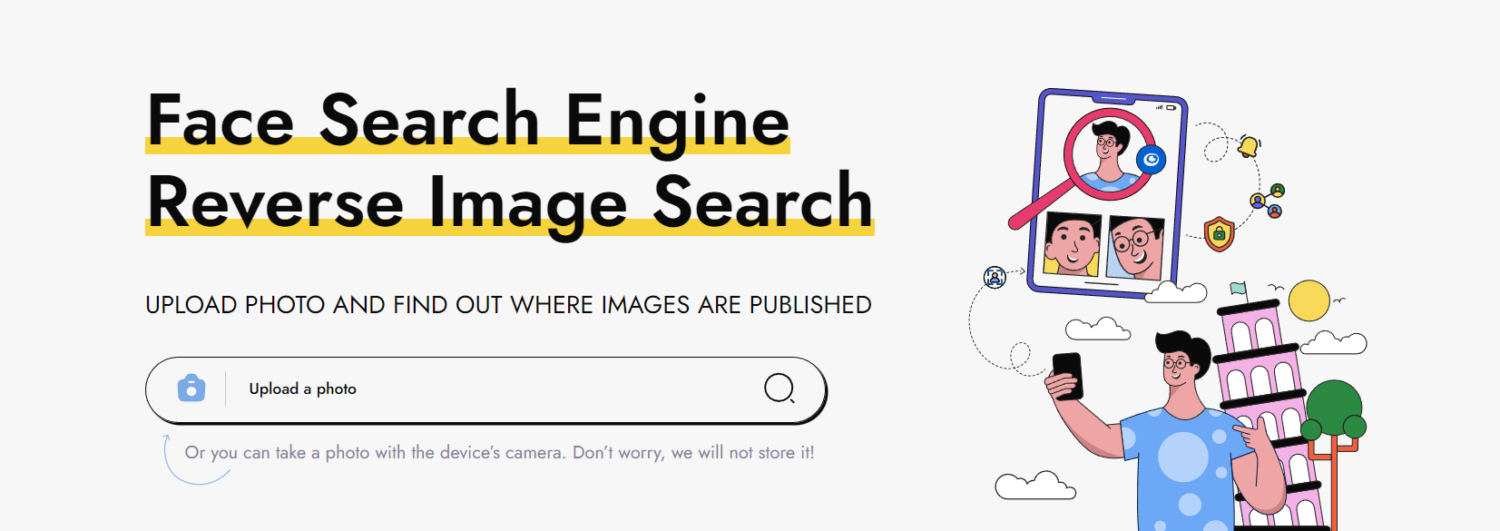Mashenka
facial recognition search engine

In the ever-evolving world of technology, the ability to discover information has become more accessible and precise. A significant breakthrough in this evolution is the development of face recognition search engines. These unique tools use advanced algorithms to identify and search for faces in images across the vast landscape of the internet. Now, you can locate an individual’s online presence or detect unauthorized use of your images with just a facial photo as a search input. This technique, often depicted in science fiction, has become a reality, providing users with a powerful tool to navigate the internet.
Understanding Face Recognition Search Engines
Face recognition search engines have revolutionized the way we browse the internet. In the not-so-distant past, we relied on textual descriptions like names or keywords to find information about a person or a product. However, with the advent of face recognition search engines, all you need is a picture.

The massive growth of visual content exchange facilitated by social media platforms necessitates the development of more sophisticated technology. Face recognition technology (FRT) is one such advancement. It’s now a widely used tool for identifying a person’s profile from their images, thus providing a new dimension to the internet surfing experience.
However, how does this fascinating technology work? Let’s delve into the mechanics of face recognition search engines.
Working Mechanism of Face Recognition Search Engines
The operation of face recognition search engines mirrors the human brain’s pattern recognition system. This concept has been translated into artificial intelligence, where face recognition tasks have become a critical component.

The working algorithm of FRT comprises two processes: identification and verification. The former defines the individual’s identity, while the latter verifies their authenticity.
Relevance of Face Recognition Search
The utility of face recognition search spans various fields. However, the ethical application of this technology is essential. Some of its diverse applications include:
- Assisting in locating missing persons by analyzing photographs.
- Aiding law enforcement in identifying culprits captured on surveillance footage.
- Use in surveillance systems at places like airports and train stations for real-time identification.
- Verifying the identity of individuals in images for identity authentication for passports and other crucial documents.
- Protecting intellectual property rights by identifying the unauthorized use of copyrighted images.
- Social media platforms use it to suggest tags and find similar faces in user-uploaded images.
- Verifying identity for secure access to devices, premises, or confidential data.
In the following sections, we will explore some of the top face recognition search engines.
Top Face Recognition Search Engines
Social Catfish
In the digital era, where authenticity is often questioned,Social Catfish serves as a reliable tool providing data related to a person’s image. It offers a comprehensive search feature that includes information extraction based on pictures, emails, names, phone numbers, addresses, and more.

However, this service is not available for free. It offers a 5-day trial period for users to experience its capabilities before opting for full membership. The application scans image metadata and device information, and it cross-references identities across social media platforms.
PimEyes
PimEyes is a search engine that leverages reverse image searching to scan an image or a face across millions of websites. It quickly retrieves information about any image from its massive image database. PimEyes provides both free and paid services, though the free version only verifies the online presence of images. Access to more advanced features, including Deep Search and results in online sites, requires a paid subscription.

FaceCheck.id
FaceCheck.id stands out with its unique interface and vibrant user experience. It uses artificial intelligence to provide social media accounts and web accounts associated with the image used. One of its most intriguing features is its ability to display a person’s criminal history, if any.

However, it’s essential to note that you must declare not to misuse the information obtained from this website for unlawful activities like stalking or blackmailing.
Betaface
Betaface is an engaging tool that can be used for both professional and personal purposes. Once you upload a photo or an image URL, it analyses multiple elements of the face, including age, attractiveness, and various facial expressions and emotions.

The tool allows bulk uploading and image comparison. It’s not a free tool, but it does offer a demo version.
TinEye
TinEye is another facial recognition search engine that uses reverse image search to provide accurate results. The website claims it has created the world’s fastest and most precise image recognition APIs.

This tool can be used instantly on your phone or PC, saving time and space.
Image Raider
Image Raider is a simple and efficient image recognition tool with a straightforward user interface. Despite being a premium service, it offers a free trial for users to decide its worth.

Yandex
Yandex is often compared to Google’s image search. When you upload an image, it provides a range of information based on the image, including facial recognition and details about their clothing.

Bing
The technology giantBing, powered by Microsoft, uses image recognition technology to recognize a wide range of images and provide quick results.

Google, the pioneer of the internet revolution, provides image search as one of its countless features. When it comes to delivering several accurate results, it is entirely free. However, the image search tool doesn’t use facial recognition while searching for photos. However, it can help you in finding similar images.

Conclusion
Face recognition search engines, as advanced tools, have opened up new opportunities for internet users. They have revolutionized the way we browse the internet, making it easier than ever before to find people and track image usage. However, like many new technologies, they have also raised concerns about privacy and misuse.
As we move forward, it will be interesting to see how these technologies evolve and how they will shape the future of internet browsing.




Responses